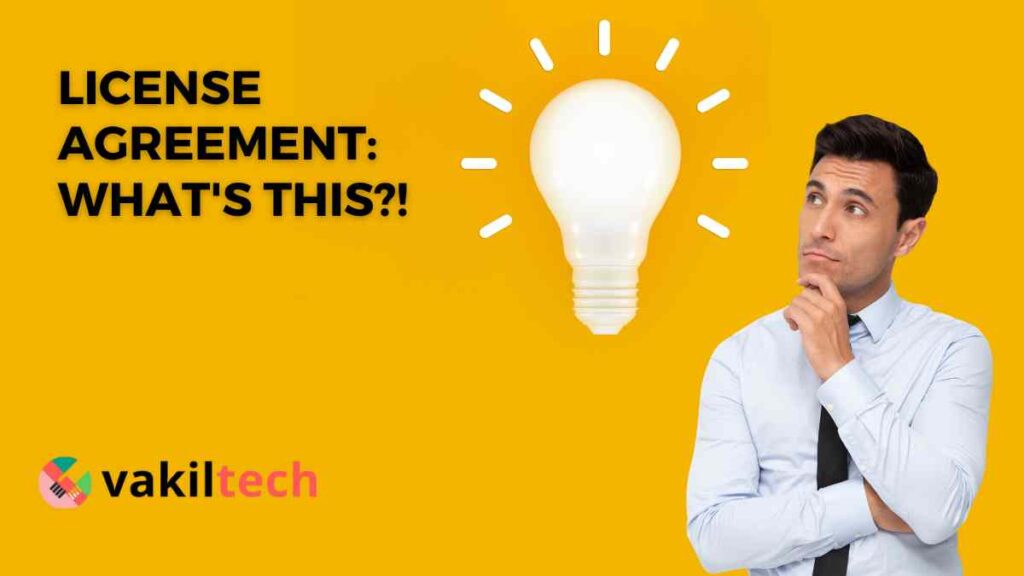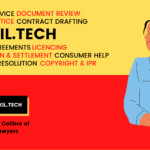Welcome to the world of licensing agreements! If you’re looking to protect your intellectual property or licence someone else’s, you’ve come to the right place. Here’s what Strictly Legal has for every small business that should be aware of before pursuing a licensing agreement.
We’ll assist you in navigating the complexities of the law and make sure you are aware of all the information required to defend your interests and make wise judgements. So buckle up and get set to explore the fascinating world of licensing agreements!
Table of Contents
What do you know about Licence and a Licensing Agreement?
A licence is a contract that permits one party to use another party’s assets, such as intellectual property (such as a trademark, patent, or work protected by copyright), for a certain use, subject to certain restrictions, and for a particular amount of time. In exchange for payment, typically in the form of royalties or fees, the property owner, also known as the licensor, offers the person or company known as the licensee permission to use their property.
Whereas, a Licensing Agreement is a written contract that outlines the specific terms and conditions of the licence granted between the licensor and the licensee. It includes details such as the scope of the licence, the duration of the licence, the territory where the licence is valid, the payment terms, and any restrictions or limitations on the use of the licensed property. Licensing agreements are common in industries such as software, music, art, and technology, where intellectual property is a valuable asset that needs protection.
What is a Brand Licencing Agreement?
Brand Licencing Agreement is an agreement for the sale of a brand’s usage to another company through the use of its trademarks, logos, or other marks. This agreement permits a business to promote goods or services using a logo or other trademarks without violating a copyright. The business that owns the trademarked goods that are the subject of the licensing is paid.
Some of the main benefits of brand licencing is that:
- Increased profits: Businesses can increase their profits by licensing their brands to outside parties.
- Brand extension: Through licensing, businesses can expand their brands into new product categories or markets without spending a lot of money on R&D.
- Increased brand exposure: By exposing the brand to new audiences, licensing can assist increase brand exposure.
- Savings: Through licensing, businesses can save the expenses involved in creating and promoting new items.
Examples of Brand Licensing Agreements are:
- Disney: With hundreds of licencing agreements spanning everything from toys and clothing to home goods and theme park experiences, Disney is a master at brand licencing.
- Nike: To build products like the Nike+ running software and the Nike+ SportWatch GPS, Nike has licenced the use of its brand to businesses like Apple and TomTom.
- Ferrari: To generate branded goods like shoes, watches, and sunglasses, Ferrari has licenced its brand to businesses like Puma, Hublot, and Oakley.
What is an Industrial Licensing Agreement?
The process of acquiring a licence or permit from the government to set up, run, or grow an industrial facility or enterprise is referred to as industrial licencing. Industrial licencing is essential because it ensures that industrial operations are carried out safely, sustainably, and in accordance with local laws and regulations.
In India, the IDRA, 1951 Act governs industrial licences in India, and the Secretariat of Industrial Assistance (SIA), acting on the licensing committee’s advice, grants them.
Some of the Industries that are subject to mandatory licensing in India are:
- Hazardous substances
- Business explosives
- Tobacco Products
- Warships and Aerospace for Defence
The following are some of the primary benefits and examples of industrial Licencing:
- Regulation observance:
Industrial licencing guarantees that businesses abide by regional rules and environmental legislation, preserving the environment and the general population.
- Safety and security:
Industrial licencing enables the safe and secure conduct of industrial activities, safeguarding community members as well as employees.
- Infrastructure development and planning:
Industrial licensing aids governments in planning and developing the infrastructure and other resources required to enable industrial development.
Examples:
- Energy:
To ensure that businesses abide by environmental and safety requirements, the energy industry—including oil and gas exploration and production—requires industrial licencing.
- Manufacturing:
To guarantee that businesses adhere to environmental norms and safety requirements, the manufacturing industry requires industrial licencing for plant setup, operation, and expansion.
- Chemicals:
To safeguard the environment and the general public’s health, the chemicals sector requires industrial licencing for the manufacturing, storage, and transportation of hazardous products.
Out Licensing and In Licensing – About & Differences:
Out-Licensing is a business strategy in which a company grants permission to another party to use its intellectual property, technology, or other assets, usually in exchange for financial compensation. This can help the company generate additional revenue and promote brand exposure.
In-Licensing is the opposite, where a company obtains permission from another party to use their intellectual property, technology, or other assets. This allows the company to access new technologies, products, or markets, and can lead to new product development and increased market share.
Here is a brief comparison of out-licensing and in-licensing in a tabular form:
| Out Licensing | In Licensing | |
| Definition | Out Licensing is granting permission to another party to use company’s intellectual property, technology, or other assets | Whereas, this typeof Licensing is obtaining permission from another party to use their intellectual property, technology, or other assets |
| Purpose | The purpose of out-licensing is to monetize and extract value from a company’s intellectual property, technology or other assets by granting permission to a third party. | In-licensing, on the other hand, aims to acquire new technology, products or capabilities to enhance a company’s own product offerings or enter new markets. |
| Advantages and Disadvantages | Out-licensing can provide a company with additional revenue streams and expand its market reach, but it may also result in loss of control over the licensed asset and potential damage to brand reputation. | In-licensing can lead to new product development and increase market share, but it can also be expensive and may require long-term commitments. |
| Assets | In out-licensing, a company can license out its intellectual property, technology, patents, know-how, and brand name to another party. | In in-licensing, a company can obtain permission from another party to use their intellectual property, technology, patents, know-how, and brand name to enhance its own product offerings or enter new markets. |
| Examples | Examples of out-licensing include a software company licensing its technology to a hardware manufacturer or a fashion brand licensing its name to a fragrance company. | Examples of in-licensing include a pharmaceutical company licensing a patented drug from another company or a tech company licensing a new technology from a startup. |
LICENCES CAN BE BOTH EXCLUSIVE AND NON EXCLUSIVE:
There are two different kinds of licences: exclusive and non-exclusive. The licensee will have exclusive rights under the exclusive licence, and all other parties will be prohibited from participating. Additionally, the owner of the copyright will be excluded.
In a non-exclusive licence, the owner of the copyright is not required to give up his rights; in fact, he retains those rights even after granting the licence to the other party. The duration of the owner’s rights might be either restricted or endless, depending on the copyright owner. Additionally, if the works were published during the licence period, the publisher is permitted to sell the unsold copies after the licence period has expired.
Examples of Licensing in India and International Business
EVOLUTION OF LICENSING IN INDIA:
In India, the process of seeking permission or authorisation from the appropriate government entity to conduct a specific economic activity or to make use of a specific good or service is referred to as licencing.
Depending on the type of business or activity, different rules and regulations apply to licencing in India. Major licencing legislation in India include the following:
1. The Indian Companies Act, 2013 –
Depending on the nature of their operation, corporations are required to get a variety of licences and permits under the Indian corporations Act in order to function, including incorporation certificates, PAN, TAN, GST, and more. These permits aid in ensuring that the business is run legally and in accordance with the law.
2. The Shops and Establishments Act –
This law governs the working conditions and hours for staff members in businesses including hotels, restaurants, and retail stores. Such establishments must get licences from the appropriate authorities and adhere to a number of rules and regulations about hiring, working conditions, pay, and leave privileges.
3. The Food Safety and Standards Act, 2006 –
In order to ensure compliance with food safety standards and regulations, food company operators in India are obliged to get licences from the Food Safety and Standards Authority of India (FSSAI).
4. The Drugs and Cosmetics Act, 1940 –
The Drugs Controller General of India (DCGI) issues licences to makers, distributors, and retailers of pharmaceuticals and cosmetics in India under the Drugs and Cosmetics Act. These licences serve to prohibit the production and distribution of fraudulent, inferior, or contaminated pharmaceuticals and cosmetics in the Indian market by ensuring compliance with safety, efficacy, and quality criteria established by law.
5. The Central Motor Vehicles Rules, 1989 –
In India, these rules control the registration and operation of motor vehicles. According to these regulations, everyone or any organisation that owns or operates a motor vehicle is required to get a number of licences and permits, including a driver’s licence, a certificate of vehicle registration, and a permit to transport goods or people. These licences and permits guarantee that automobiles adhere to safety and environmental regulations and that their drivers possess the knowledge and expertise required to operate them safely on Indian roads.
For Instance, a tremendously successful licensing programme for the animated TV brand Chota Bheem is one of India’s success stories with domestic intellectual property. As is generally acknowledged, licensing calls for a long-term perspective and plan. Additionally, it needs to be outlined in the plan when a brand is developed. Licensors should keep in mind that India is a market that is sensitive to price; as a result, goods must be offered at a price that is reasonable for Indian customers.
A valid Licensing Agreement should include:
1. a list of the licenced goods, their selling and distribution restrictions, as well as the duration and scope of the licence
2. the frequency and sum of royalties that the licensee must pay, as well as tax matters
3. Each party’s right to terminate the agreement as well as their rights and obligations following termination
4. the parties’ respective rights and duties in the event that they find a third party using the mark illegally
5. the creation of a local website, domain registration, and the ability to sell through local e-commerce portals
6. the channels for handling consumer complaints and product-related regulatory issues
LICENSING IN THE INTERNATIONAL BUSINESS:
An international licensing setup permits foreign companies to produce a proprietor’s product for a set period of time in a particular market, either exclusively or not.
In this method of entering a foreign market, a licensor in the home country grants a licensee in the host country some restricted rights or resources. Patents, trademarks, managerial know-how, technology, and other rights or resources may be available to the licensee, enabling it to manufacture and sell goods that are comparable to those the licensor has been making and selling domestically without the licensor having to establish a new business overseas. The royalties paid to the licensor are typically determined as a percentage of one-time payments, technical fees, and other fees.
When a company in one country licences its technology, product, or brand to a company in another country, this is an illustration of licencing in international business. Due to this, the foreign company can utilise the technology or brand without having to spend money on R&D or develop a brand-new product from scratch.
For instance, a technological business in the United States might grant a company in China a licence to utilise its proprietary software, enabling the Chinese company to incorporate the software into its goods. Every time a product using the software is sold, a royalty payment is made to the US corporation in exchange.
When a fashion brand licences its trademark and designs to a business in another country, that is another instance of licensing in international business. Following that, the foreign company can produce and market the goods of the fashion brand in the foreign market under its own name. The fashion company is compensated with a licensing fee and royalties from the sale of the goods.
LICENSOR AND LICENSEE DISTINGUISHED:
| Licensor | Licensee | |
| Definition | A party that owns a product, technology, or intellectual property and grants permission to another party to use it for a fee or royalty. | A party that obtains permission from a licensor to use a product, technology, or intellectual property for a fee or royalty. |
| Ownership | The licensor owns the product, technology, or intellectual property being licensed. | The licensee does not own the product, technology, or intellectual property being licensed, but has the right to use it for a specific purpose. |
| Responsibilities | The licensor is responsible for maintaining the ownership and control of the licensed product, technology, or intellectual property. | The licensee is responsible for complying with the terms and conditions of the license agreement and ensuring proper use of the licensed product, technology, or intellectual property. |
| Royalties | The licensor typically receives royalties or a fee in exchange for granting the license to the licensee. | The licensee pays a fee or royalty to the licensor for the right to use the licensed product, technology, or intellectual property. |
| Termination | The licensor may terminate the license agreement if the licensee breaches the terms and conditions of the agreement. | The licensee may terminate the license agreement if the licensor breaches the terms and conditions of the agreement or if the licensed product, technology, or intellectual property is no longer useful to the licensee. |
| Control | The licensor retains control over the licensed product, technology, or intellectual property and may limit the licensee’s use or distribution of it. | The licensee must comply with the terms and conditions of the license agreement and may have limited control over the licensed product, technology, or intellectual property. |
What do you know about a copyright?
A copyright is a legal right granted to the creator or owner of an original work of authorship, such as a literary, artistic, musical, or dramatic work, or a software program, giving them exclusive rights to control the use and distribution of their work for a certain period of time. This means that the copyright owner has the right to reproduce, distribute, and display their work, as well as create derivative works based on it, and to prevent others from doing so without their permission.
Purpose of a copyright:
The purpose of copyright protection is to promote creativity and innovation by providing an incentive for creators to invest their time, effort, and resources in creating original works, knowing that they can benefit from their creations and control their use and exploitation.
The Copyrights Act, 1957 – how the law defines itself!
The Copyright Act, 1957 is a law that safeguards Indian writers, artists, musicians, and other creators of creative works. It provides for sanctions for infringement and gives copyright owners the sole authority to manage the use and distribution of their works. Automatic copyright protection is provided, and registration is not required but is advised. The Act has undergone numerous revisions throughout the years to keep up with the advancement of technology and world events.
Know about the differences between Trademark, Patent & Copyright:
Different intellectual property rights, such as copyrights, patents, and trademarks, protect different kinds of works. The key variations between them are as follows:
Trademarks: A company’s goods or services are identified and distinguished from those of competitors by trademarks, which can be symbols, logos, words, or phrases. They serve to prohibit others from utilising identical marks that can lead to customer confusion and to protect brand names, slogans, and logos. Trademarks are renewed and have an unlimited lifespan.
Patents: Patents provide legal protection for innovative items, processes, tools, and ways of doing things. For a set amount of time, often 20 years from the date the application was submitted, they grant the creator the only authority to bar anyone from creating, utilising, selling, or importing the invention.
Copyrights: Copyrights protect original creative works, such as literary, artistic, musical, and dramatic works, as well as software, films, and sound recordings. They grant the sole right to reproduce, distribute, and display the work, as well as to adapt it and develop derivative works. Copyrights are inherent and come into being as soon as a work is produced in a tangible form, such a book or a recording, and they may continue for the author’s lifetime as well as a certain amount of time after their passing.
Example of Copyright:
Every time a new technological development takes place, the owner of a piece of work faces a fresh copyright challenge. For instance, the internet has shown to be highly innovative. Regardless of the users’ physical location, it has irreversibly altered how they disseminate and duplicate content. This makes having more thorough copyright laws to safeguard authored works even more essential.
How significant is Licence as a marketing strategy?
Yes, firms can use licensing as a key marketing tactic. Without having to bear the costs of producing, promoting, and distributing their products themselves, they can increase the reach of their brand and create new revenue streams by licensing their intellectual property, such as trademarks or patents, to other companies.
For instance, a well-known company may grant a licence for the use of its logo on a line of merchandise that is not made by the company itself, such as garments or home goods. This can support the brand’s image in the marketplace and help it become more visible.
Conclusion:
To sum up, a licencing agreement is a contract between a licensor and a licensee that grants the licensee the right to use the licensor’s intellectual property, such as a trademark, patent, or work protected by copyright, for a specific reason and duration in exchange for the payment of royalties or other compensation. The agreement outlines the license’s terms and conditions, including the license’s boundaries, its payment requirements, and any limitations or duties on how the intellectual property may be used. Both the licensor and the licensee can benefit from a licencing arrangement, which enables them to monetize their intellectual property and increase their market share.
A licensing agreement is a legal contract between a licensor and a licensee that allows the licensee to use the licensor’s intellectual property for a specified purpose and time period.
The purpose of a licensing agreement is to allow a licensor to monetize their intellectual property by granting a licensee the right to use it for a fee or royalty, while providing the licensee with access to valuable intellectual property.
The common types of intellectual property licensed under a licensing agreement include trademarks, patents, copyrights, and trade secrets.
The key terms included in a licensing agreement include the scope of the license, payment terms, restrictions on use, warranties and indemnities, termination clauses, and dispute resolution mechanisms.
The benefits of a licensing agreement for the licensor include revenue generation, brand awareness, and increased market reach, while the licensee benefits from access to valuable intellectual property that can enhance their products or services and provide a competitive advantage.





